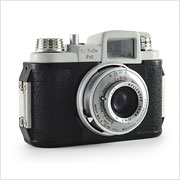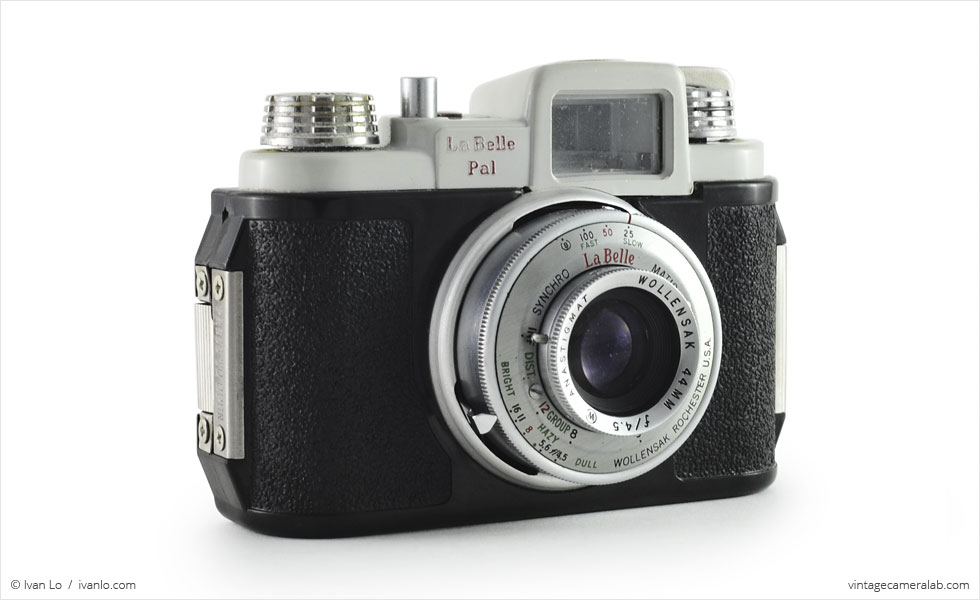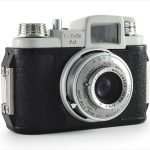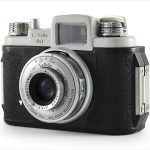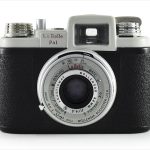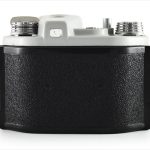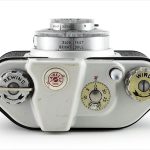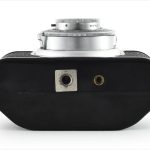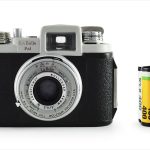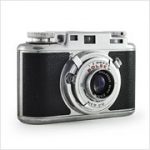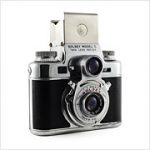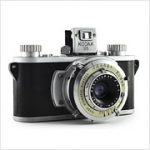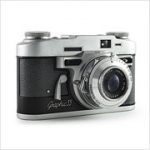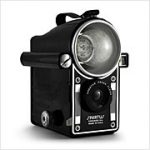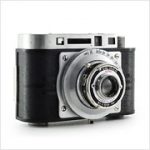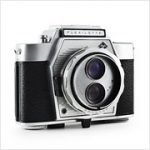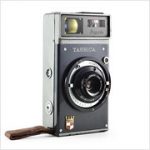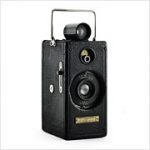LaBelle Pal Specifications
| Manufacturer: | Bolsey Corp. of America for |
| La Belle Industries Inc. | |
| Origin: | USA |
| Made in: | USA |
| Introduced: | 1952 |
| Type: | Viewfinder |
| Format: | 135 Film |
| Dimensions: | 11.3 x 7.9 x 6.5 cm |
LaBelle Pal Overview
The LaBelle Pal is a 35mm viewfinder camera designed by Bolsey and sold by LaBelle Industries of Oconomowoc, Wisconsin. The camera was actually meant to be the Bolsey Model A, which was supposed to slot in nicely as an entry model alongside the Model B (a rangefinder) and the Model C (a twin lens rangefinder). Unfortunately, the Model A never quite materialized for reasons unknown and so only exists as the Labelle Pal. As a result, this camera is fairly rare.
Most of the controls on the Pal are located on the lens barrel: the aperture selector can be found at eight o’clock, the outer ring sets the shutter speed, and focus is controlled by the inner ring surrounding the Wollensak 44mm f/4.5 lens. The film rewind knob can be found to the left of the viewfinder on the camera’s top plate while the film counter, shutter button, and film advance knob are located to the right. The film door latch can be found on the user’s right hand side of the camera while a tripod mount and flash sync socket for an external flashgun are on the bottom.
According to an advertisement for the Bolsey Model A that never was, the biggest selling point for this camera was simplicity. In order to simplify the photo taking process, Bolsey developed what they called the “red line index.” Basically, selecting the red-lettered aperture, shutter speed, and focus distance markings would result in a combination of settings that should be suitable for the vast majority of daylight outdoor photos. Also, as a way to prevent unintentional double exposures, a red flag is raised in the viewfinder immediately after the shutter is fired and remains until the frame is advanced.
I found this LaBelle Pal at the estate sale of the late Kirk Kekatos: former president and founding member of the Chicago Photographic Collectors Society. I wasn’t 100% sure exactly what it was when I found it sitting on a shelf next to a few dozen Bolseys but I recognized the similarities and assumed that it was a rebadged model of some sort. I ended up taking a chance on it and bought the Pal along with a nice Bolsey Model B and other cameras like the Vest Pocket Kodak, Bell & Howell Electric Eye 127, Univex Model AF-4, and Ansco Memo.
Find your very own LaBelle Pal on eBay.
McKeown, James M. and Joan C. McKeown’s Price Guide to Antique and Classic Cameras, 2001-2002. (Grantsburg, WI, USA: Centennial Photo Service, 2001), p 104.
